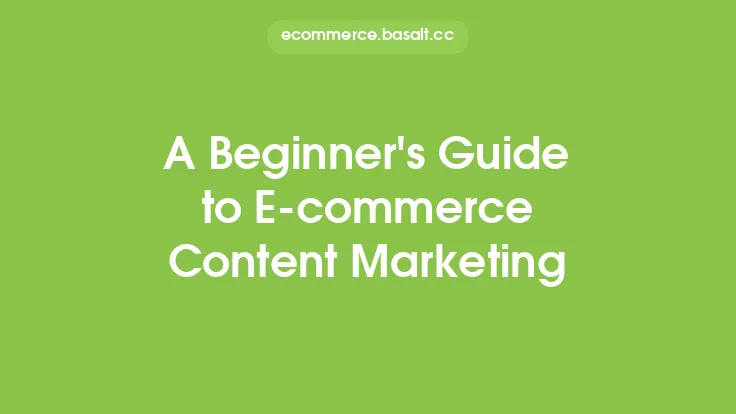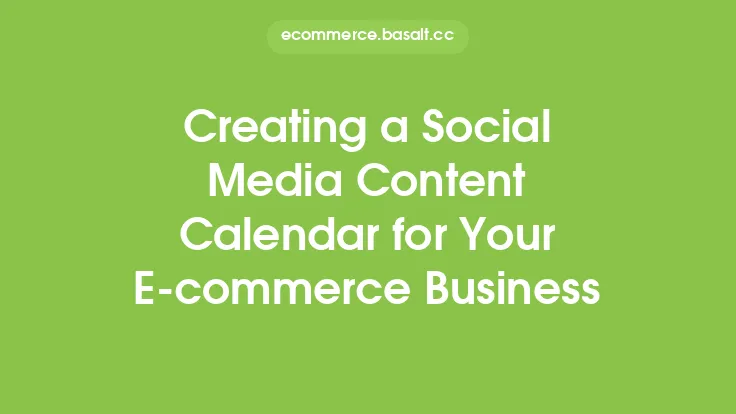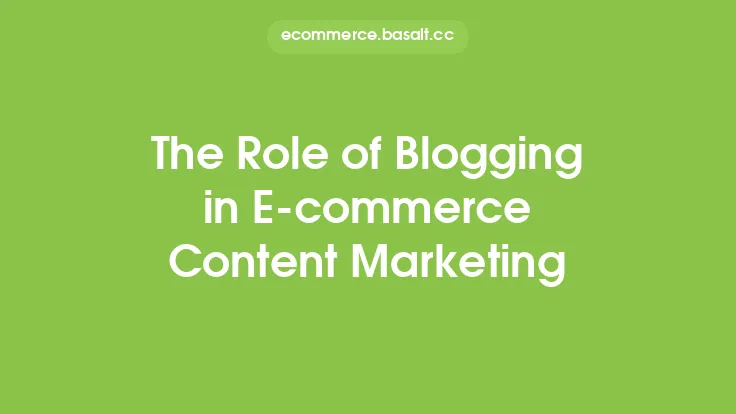Creating engaging e-commerce content is crucial for online businesses to attract and retain customers, drive sales, and establish a strong brand presence. In today's digital landscape, e-commerce content marketing has become a vital component of a successful online marketing strategy. With the ever-increasing competition in the e-commerce industry, it's essential to create content that resonates with your target audience, sets you apart from the competition, and ultimately drives business growth.
Understanding Your Target Audience
To create engaging e-commerce content, you need to have a deep understanding of your target audience. This includes their demographics, interests, preferences, pain points, and behaviors. Conducting market research and analyzing customer data can help you gain valuable insights into your audience's needs and preferences. You can use tools like Google Analytics, social media analytics, and customer surveys to gather data and create buyer personas. These personas will serve as a guide for creating content that speaks directly to your target audience.
Types of E-commerce Content
There are various types of e-commerce content that you can create to engage your target audience. These include:
- Product descriptions and specifications
- High-quality product images and videos
- Customer reviews and testimonials
- Blog posts and articles
- Social media posts and stories
- Email newsletters and promotional emails
- User-generated content campaigns
- Influencer partnerships and sponsored content
- Podcasts and video content
- Interactive content like quizzes, polls, and surveys
Each type of content serves a specific purpose and can be used to achieve different marketing goals. For example, product descriptions and images are essential for product pages, while blog posts and articles can be used to establish thought leadership and drive organic traffic.
Crafting Compelling Product Content
Product content is a critical component of e-commerce content marketing. It includes product descriptions, specifications, images, and videos. To craft compelling product content, you need to focus on the benefits and features of the product, rather than just listing its specifications. Use high-quality images and videos to showcase the product from different angles, and include customer reviews and testimonials to build trust and credibility. Additionally, use persuasive and engaging language to describe the product and its benefits, and make sure to optimize your product content for search engines by using relevant keywords and meta tags.
The Power of Visual Content
Visual content is a powerful tool for e-commerce content marketing. It can help to grab attention, convey complex information in a simple way, and create an emotional connection with your target audience. Types of visual content include images, videos, infographics, and animations. To create effective visual content, you need to use high-quality images and videos, and make sure they are optimized for different devices and screen sizes. You can also use visual content to tell stories, showcase products, and provide tutorials and demonstrations.
Leveraging User-Generated Content
User-generated content (UGC) is a powerful tool for e-commerce content marketing. It includes customer reviews, testimonials, photos, and videos. UGC can help to build trust and credibility, increase engagement, and drive sales. To leverage UGC, you need to encourage your customers to create and share content featuring your products or services. You can do this by running social media contests, offering incentives, and creating a branded hashtag. You can also use UGC on your product pages, social media channels, and marketing campaigns to create social proof and build trust with your target audience.
Measuring and Optimizing Content Performance
To create effective e-commerce content, you need to measure and optimize its performance regularly. This includes tracking metrics like website traffic, engagement, conversion rates, and sales. You can use tools like Google Analytics, social media analytics, and content management systems to track your content's performance and identify areas for improvement. Additionally, you can use A/B testing and experimentation to optimize your content and improve its performance over time. By measuring and optimizing your content's performance, you can ensure that it is achieving your marketing goals and driving business growth.
Creating a Content Calendar
A content calendar is a essential tool for e-commerce content marketing. It helps you to plan, organize, and schedule your content in advance, ensuring that you are consistently publishing high-quality content that resonates with your target audience. To create a content calendar, you need to identify your content goals, target audience, and marketing channels. You can then plan and schedule your content using a spreadsheet, calendar, or content management system. Make sure to include a mix of content types, topics, and formats to keep your content fresh and engaging.
Repurposing and Reusing Content
Repurposing and reusing content is a great way to get the most out of your e-commerce content marketing efforts. It involves taking existing content and reusing it in different formats, channels, or contexts. For example, you can turn a blog post into a video, social media post, or email newsletter. You can also use customer reviews and testimonials in different marketing campaigns, or create a series of social media posts from a single piece of content. By repurposing and reusing content, you can save time, reduce costs, and increase the reach and impact of your content.
Conclusion
Creating engaging e-commerce content is a critical component of a successful online marketing strategy. By understanding your target audience, crafting compelling product content, leveraging visual content, and measuring and optimizing performance, you can create content that drives business growth and establishes a strong brand presence. Remember to create a content calendar, repurpose and reuse content, and continually experiment and improve your content marketing efforts to stay ahead of the competition. With the ever-evolving nature of e-commerce content marketing, it's essential to stay up-to-date with the latest trends, best practices, and technologies to ensure that your content marketing efforts are effective and drive long-term success.





